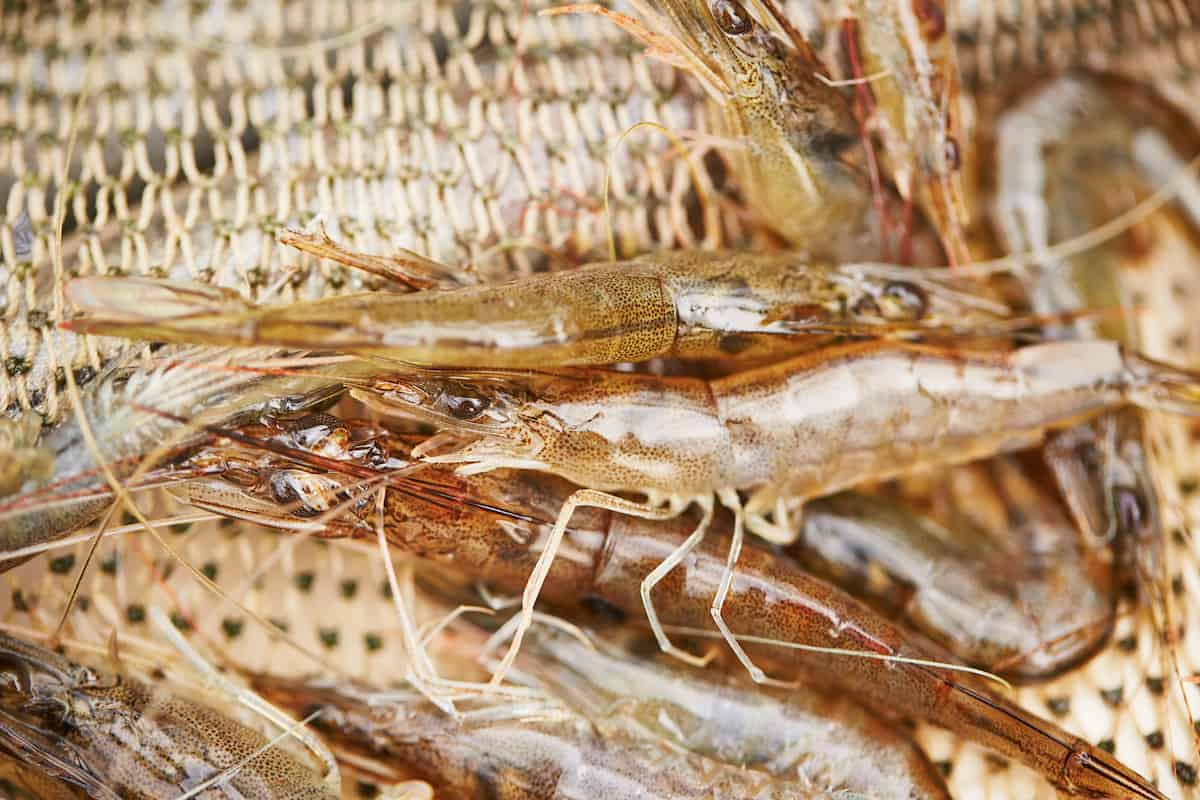Shrimp (prawn) farming is an aquaculture company that is growing quickly. It involves growing shrimp in artificial ponds or tanks for sale. Shrimp is a popular type of seafood that is eaten all over the world. Shrimp farming involves putting in young shrimp, feeding them and watching how they grow, and then taking out the full-grown shrimp to sell. There are different ways to farm shrimp, such as extensive, semi-intensive, and intensive methods.

There have been some problems, like disease outbreaks and environmental damage, but improvements in technology and management have made shrimp farming more efficient and sustainable. The white-spot disease, which is driven on by infectious agents such as viruses, bacteria, fungi, and parasites, has produced severe losses for the shrimp farming business. Unhealthy environmental conditions can also be the root of non-infectious disorders. The most significant harm to shrimp aquaculture in maritime states has come from viral infections.
White Spot Disease Management in Shrimp (Prawn)
Introduction to White Spot Disease (WSD) in Shrimp(Prawn)
White spot disease (WSD) is a highly contagious viral infection that affects shrimp (prawns) worldwide. The white spot syndrome virus (WSSV) causes the disease, which shows up as small white spots or patches on the shrimp shells of those with it. WSD can spread quickly and kill a lot of shrimp, which can cause shrimp farms to lose a lot of money.
The virus can spread through dirty water, live or dead shrimp infected, and dirty tools. Once a shrimp is infected, the virus quickly copies itself and attacks the immune system, damaging tissues and killing the shrimp. WSD can be stopped by taking strict biosecurity steps, like using disinfectants, taking care of water properly, and putting new stocks in quarantine.
The Pathogen Responsible for Shrimp White Spot Disease (WSD) (Prawn)
White spot disease (WSD) in shrimp is caused by a highly contagious double-stranded DNA virus called white spot syndrome virus (WSSV), also called white-spot virus (WSV) or white-spot syndrome baculovirus (WSSB) complex or systemic ectodermal and mesodermal baculovirus (SEMBV).
In case you missed it: Downy Mildew Disease Management in Sorghum: Symptoms, Treatment, Chemical, Biological, Natural, and Organic Control

This virus spreads quickly, attacks the shrimp’s immune system, damages tissues, and kills them. Since there is no specific cure for the disease, strict biosecurity measures are needed to stop it from spreading in shrimp farms.
What are the Signs and Symptoms of White Spot Disease (WSD) in Shrimp(Prawn)
- Rapid reduction in feed consumption: Infected shrimps may show a decrease in appetite and feed consumption.
- The appearance of white spots: During the initial stages of infection, small white spots of up to 2mm in diameter appear on the head and tail of the shrimp and later spread all over the exoskeleton.
- Loose cuticle: The cuticle becomes loose and can be easily removed from the shrimp’s body.
- Reddish discoloration: The body and appendages of the infected shrimp may show reddish discoloration.
- Opaque appearance: In Indian white shrimp (P. indicus), infected shrimp may turn opaque.
- Prominent white spots: White spots are more prominent in tiger shrimp (Penasos monodon).
- High mortality rate: Smaller shrimps (<5g) may succumb to the disease within 2-3 days, while larger shrimps (10-40g) may die within 5-10 days.
Diagnosis of White Spot Disease (WSD) in Shrimp(Prawn)
- Microscopic examination: WSD can be presumptively identified by examining tissue impression smears stained with Geimsa’s stain. This method reveals the presence of viral inclusions in the cuticular epidermis, gills, lymphoid organs, and gut wall.
- Molecular biology approaches: As molecular biology advances, polymerase chain reaction (PCR), gene probes, and in-situ hybridization can quickly diagnose viral infections.
- Histopathological techniques: Fixed tissue sections stained with hematoxylin and eosine can reveal intra-nuclear inclusion bodies in the hypertrophied nuclei of gills, cuticular epithelial cells, connective tissue cells, and lymphoid organs.
- Bioassay: Filtered tissue homogenates can be used to confirm the viral etiology of WSD.
- Electron microscopic examination: Using electron microscopy, WSV can be confirmed by examining the virus. The virus is rod-shaped and ranges from 70-150 by 275-380 nanometers.
In case you missed it: Buffalo-Pox Management in Buffalo: Disease Symptoms, Causes, Diagnosis, Treatment, Control, and Prevention

Prevention and Control of White Spot Disease (WSD) in Shrimp(Prawn)
- There are no known control measures for white spot disease (WSD) in shrimp.
- The best way to stop the disease and keep it from spreading is to use integrated management practices.
- These include quarantine, routine testing of shrimp for viral infections, and good husbandry practices like keeping the water clean and not overstocking.
- Pathogenic organisms should be burned or buried away from the farms to stop the disease from spreading to other farms.
- Also, farmers should take strict biosecurity steps to stop the disease from getting into their farms.
- To stop WSD outbreaks and limit losses, it is important to find and report suspected cases as soon as possible.
Conclusion
White spot disease (WSD) is a highly infectious and severe viral illness affecting shrimp worldwide. WSSV causes it, which can cause considerable economic losses. Disease management requires early identification and diagnosis. WSD causes lethargy, feed decrease, and exoskeleton white patches.
Good husbandry, quarantine, and frequent screening can help prevent WSD, but there is no cure. To prevent the disease from spreading to the farm, infected cattle should be appropriately disposed of, and biosecurity measures should be undertaken. In to protect the shrimp sector against WSD, effective management is needed.
- Deworming Schedule for Dogs/Puppies: A Beginners Guide
- How to Prevent and Control Parasites in Goats
- Beneficial Insects in Pest Management
- Natural Solutions for Pest Control in Flower Gardens
- Types of Fungicides Used in Agriculture
- Common Issues in the Fruit Development Stage of Pomegranate Farming
- Fruit Development Issues in Papaya: Easy Solutions and Treatment
- Soil-Borne Diseases and How to Protect Your Plants
- Practices to Prevent Disease Spread in the Garden